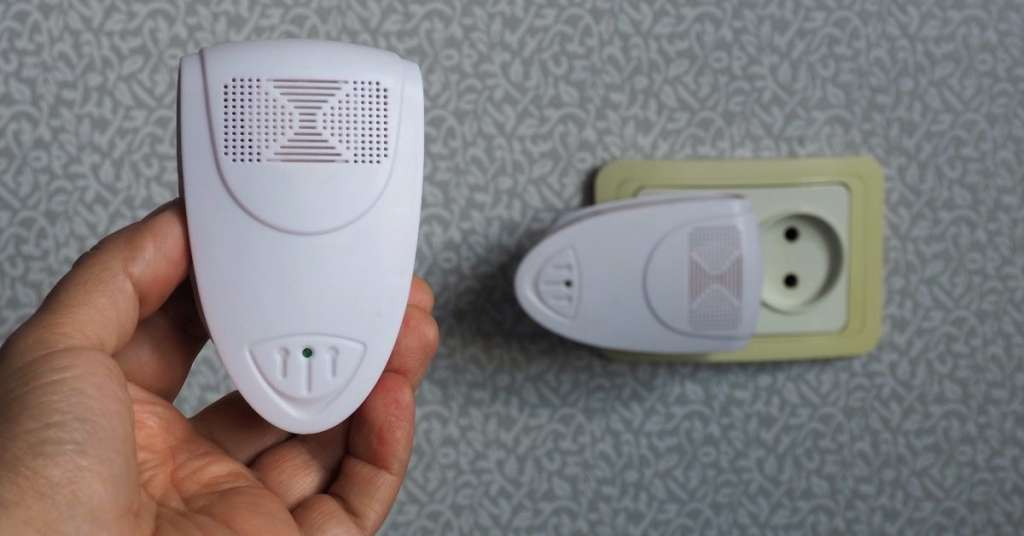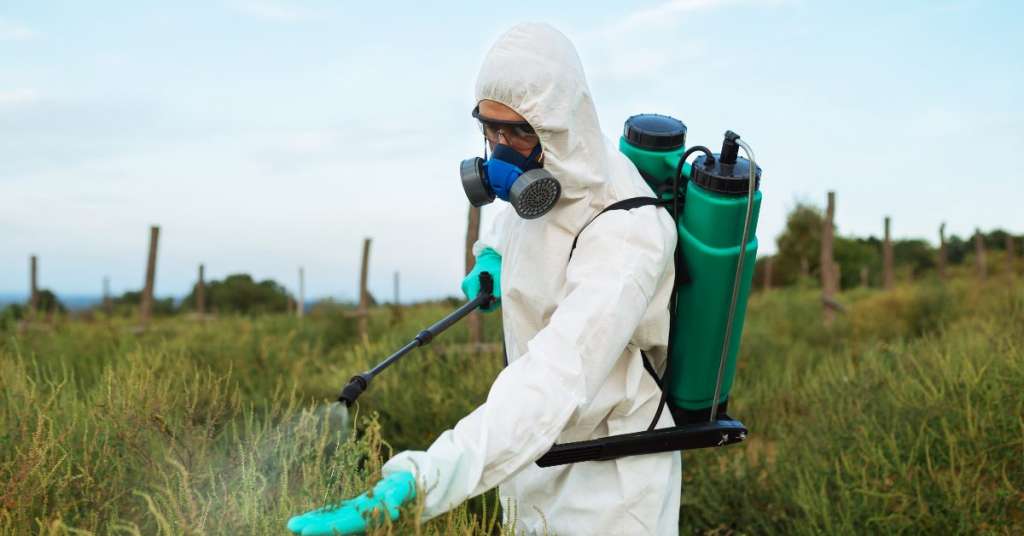As a pest control professional, I have seen firsthand how the industry has evolved over the years. From traditional methods for pest problems, using chemicals like pesticides and traps, to innovative pest solutions, we have come a long way. One of the most significant developments in recent years is the impact of pest control technology.
It’s honestly been crazy to see how technology has changed our industry. This new tech is unlikely to replace the tried and tested pest control methods, just like how a hammer will always be essential in a carpenter’s arsenal, but it can help broaden your service offering and improve how quickly you can establish systems.
So before you go out and buy a fleet of drones, you’re going to be better off ensuring all your essential gear is top-notch! Austates Pest Equipment offers the best pest control application gear around.
Introduction to Pest Control Technology
Pest control technology refers to the use of advanced tools and techniques to control and prevent pest infestations. Of course, you have existing machines such as sprayers, misters, foamers and other application methods that help treat pests in a wide range of circumstances. New systems include electronic monitoring systems, smart traps, new chemicals, and automated devices.
These innovative pest solutions have significantly improved the efficiency and effectiveness of pest control by reducing the need for chemical treatments and minimising the impact on animals and the environment.
How Innovative Pest Solutions Are Transforming the Pest Control Industry
Pest control technology is transforming the industry by allowing professionals to detect and monitor activity in real time, which enables them to take a proactive approach to detecting and treating infestations with tailored data.
Additionally, these innovative pest solutions are safer and more sustainable than traditional chemical treatments. They also provide more accurate and reliable data, which helps professionals to make informed decisions.
The Benefits of Developing Pest Control Technology
One of the significant benefits of new pest control technology is its ability to reduce the frequency of pesticides. Chemical pesticides will always have an impact on the environment—as a technician yourself, you understand that. The goal of our trade is to discover methods that adequately resolve an issue while minimising the impact on other animals, humans and beneficial insects.
Advanced pest control technology and newly produced chemicals allow us to maintain a high quality of work—maybe even higher—without salting the earth, so to speak. By embracing new tech, we help protect the environment, animals and promote public health. Additionally, advancing technology helps to improve the frequency, efficiency and effectiveness of pest control operations, which reduces costs and increases customer satisfaction. Sounds like a win-win, huh?
Monitoring technology also provides real-time data to help you do your job faster. This data helps pest control professionals to make informed decisions and respond quickly to pest infestations. It also provides valuable insights into pest behaviour, which helps professionals to develop more effective pest control strategies.
“Traditionally, you’d be checking every trap. Now you mainly just check the traps which you know have been triggered, which means you can spend the time that you’re not checking the other traps actually surveying the house, garden or building,” – Dandja Huitink, from Rentokil.
Key Features of Pest Tech Tools
Pest tech tools have many features that make them effective in controlling rodents and preventing pest infestations. These features include electronic monitoring systems, drones, smart traps, and automated devices.
Electronic monitoring systems allow pest control professionals to detect and monitor pest activity in real time, which helps them to take a proactive approach to pest problems.
Smart traps use advanced sensors and cameras to detect and capture pests, which reduces the need for chemical treatments. Automated devices use artificial intelligence and machine learning algorithms to detect rodents and other pests and prevent pest infestations.
Farmers and agricultural workers have been utilising drone technology to monitor their crop. Using accurate sensors, drones can determine water stress, crop nutrient levels and poor soil health, as well as survey the area for potential spots that are damaged from pests like wild pigs. Drone technology gives farmers an aerial view of their land so they can spot signs of pests that may otherwise be hidden on the floor.
9 Innovative Developments in Pest Control Technology
- Natural Pesticides: Natural pesticides are a recent trend in the pest control industry. These pesticides use natural ingredients like essential oils to repel pests without harming humans, pets, or the environment. They are often used in residential settings and in organic farming operations. Examples of natural pesticides include peppermint oil, vinegar, and diatomaceous earth.
- Smart Traps: Smart traps are an innovative solution to traditional pest traps. They use sensors and cameras to detect and capture pests more efficiently. Some models can even alert homeowners when a pest has been caught, making it easier to dispose of the carcass. Smart traps are often used in residential and commercial settings to control pests like mice, rats, and cockroaches.
- Drones: Drones are becoming more popular in the pest control industry. They can be used to survey large areas and locate infestations. This technology can help pest control professionals identify and treat infestations more quickly and efficiently. Drones are often used in agricultural settings to monitor crops for pests and in residential settings to locate nests and hives.
- Thermal Imaging: Thermal imaging cameras are a recent development in the pest control industry. They can detect heat signatures from pests hiding in walls, attics, or other hard-to-reach areas. This technology can help pest control professionals target infestations more effectively. Thermal imaging is often used to detect infestations of rodents, bats, and other pests that can hide in small spaces.
- Electronic Zappers: Electronic zappers are a popular solution for controlling flying insects like mosquitoes and flies. They use a high-voltage shock to kill pests, and they are often used outdoors in residential and commercial settings. Some models can even be powered by solar panels, making them a sustainable option for pest control.
- Biopesticides: Biopesticides are a type of pesticide that uses natural organisms like bacteria or fungi to control pests. This method is effective and environmentally friendly, as it does not harm beneficial insects or pollute the environment. Biopesticides are often used in agricultural settings to control pests like insects, fungi, and weeds.
- Genetic Manipulation: Genetic manipulation is a relatively new technology that is being explored for pest control. It involves altering the genes of pests to make them less harmful or more susceptible to natural predators. While this technology is still in the experimental stages, it holds great promise for the future of pest control.
- Robotics: Robotics are becoming more popular in the pest control industry. Robots can be used to scout for pests, apply pesticides, or monitor pest populations. This technology can help reduce the need for human labour and increase efficiency. Robotics are often used in agricultural and commercial settings to control pests.
- AI-Powered Pest Control: AI-powered pest control is a recent development in the pest control industry. It involves using artificial intelligence to analyse data on pest behaviour and migration patterns to predict and prevent infestations. AI can also be used to develop targeted pest control solutions, reducing the need for harmful chemicals and minimising the impact on the environment. AI-powered pest control is often used in commercial and residential settings to control pests like cockroaches, termites, and bed bugs.
Top Pest Control Technology Trends and Predictions for the Future
The pest control industry is constantly evolving, and new technologies are being developed all the time. Some of the top trends and predictions for the future include the use of drones, the development of more advanced sensors and cameras, and the use of artificial intelligence and machine learning algorithms to detect and prevent pest infestations.
Impact Pest Control Technology in Action: A Review from PCT Magazine
PCT Magazine recently reviewed the impact of pest control technology, and the results were impressive. The review found that new technology has significantly improved the efficiency and effectiveness of operations. It also found that new technology has reduced the need for chemical treatments, which has helped to protect the environment and promote public health.
Choosing the Right Pest Control Technology for Your Business
Choosing the right pest control technology for your business can be a daunting task. However, there are several factors to consider when making your decision. These factors include the type of pest you are dealing with, the size of the infestation, and the budget available. It is also important to consider the level of expertise required to operate the technology and the support and training available from the manufacturer.
Investing in Pest Control Technology: Cost vs. Value
Investing in pest control technology can be expensive, but it is important to consider the long-term benefits. Pest control technology can significantly improve efficiency and effectiveness which reduces costs and increases customer satisfaction. It also helps to protect the environment from other pests and promotes public health. When considering the cost of new technology, it is important to weigh the benefits against the investment.
Conclusion
Advances in Pest control technology are revolutionising the industry by providing innovative pest solutions that are safer, more effective, and more sustainable than traditional chemical treatments. Still, nothing beats a well equipped spray unit when it comes to carrying out effective pest control. If you want to ensure your rig is set up as well as it can be, check out our service offerings.




